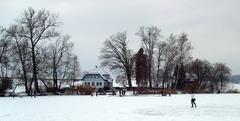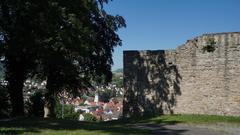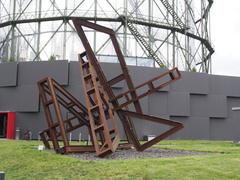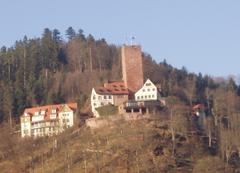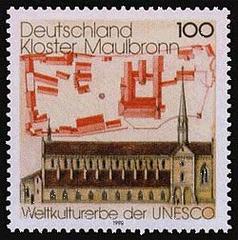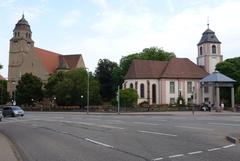Comprehensive Guide to Visiting Pforzheim, Germany
Date: 18/07/2024
Introduction
Nestled in the state of Baden-Württemberg, Germany, Pforzheim is a city that seamlessly blends its rich historical heritage with modern amenities. Known as the ‘Golden City’ due to its illustrious jewelry and watchmaking industry, Pforzheim offers a fascinating journey through time, from its Roman origins to its contemporary significance. This guide aims to provide a comprehensive overview of Pforzheim, detailing its historical sites, visitor information such as opening hours and ticket prices, and highlighting must-see attractions and travel tips.
Table of Contents
- Introduction
- Historical Background
- Visitor Information
- FAQ
- Special Events and Guided Tours
- Photographic Spots
- Conclusion
Historical Background
Early History and Roman Influence
Pforzheim’s history dates back to around 90 AD when the Romans established a military camp and a civilian settlement named ‘Portus.’ The strategic location at the confluence of the Enz, Nagold, and Würm rivers facilitated trade and transportation. This Roman legacy laid the foundation for Pforzheim’s development (Pforzheim History).
Medieval Period and the Margraves of Baden
In 1067, Pforzheim was granted market rights, boosting its economic status. The Margraves of Baden played a crucial role in the town’s development, establishing it as an administrative center. Key medieval landmarks like St. Michael’s Church still stand today, reflecting Pforzheim’s rich heritage (Baden History).
The Renaissance and the Birth of the Jewelry Industry
The Renaissance period marked a significant turning point. In 1767, Margrave Karl Friedrich of Baden founded a watch and jewelry manufacturing school, earning Pforzheim the nickname ‘Golden City.’ By the 19th century, the town was renowned for its high-quality jewelry and watches (Jewelry History).
Industrialization and Economic Growth
The 19th century brought industrialization, transforming Pforzheim into a hub for various industries. The expansion of the railway network connected it to major cities, further boosting economic growth. This period saw significant urban development, including new residential areas, schools, and public buildings (Industrialization).
World War II and Reconstruction
Pforzheim was heavily bombed during World War II, resulting in significant destruction and loss of life. The post-war period was marked by extensive reconstruction efforts, with a modern urban layout and restoration of historical buildings (WWII Bombing).
Modern Era and Cultural Significance
Today, Pforzheim is a vibrant city with a thriving jewelry and watchmaking industry. The Schmuckmuseum Pforzheim (Jewelry Museum) showcases its illustrious history in jewelry making. The city also boasts several cultural and historical landmarks, including the Technical Museum and the Pforzheim Gallery (Schmuckmuseum).
Educational and Research Institutions
Pforzheim is home to the Pforzheim University of Applied Sciences, renowned for its programs in design, engineering, and business. The university collaborates with local industries, fostering innovation and providing a skilled workforce (Pforzheim University).
Visitor Information
Visiting Hours and Tickets
- Schmuckmuseum Pforzheim - Open Tuesday to Sunday, 10 AM to 5 PM. Tickets are €5 for adults, €3 for students and seniors.
- Technical Museum - Open Wednesday to Sunday, 11 AM to 5 PM. Tickets are €4 for adults, €2 for children.
- Pforzheim Gallery - Open Tuesday to Sunday, 10 AM to 6 PM. Tickets are €6 for adults, €4 for concessions.
Travel Tips
- Accessibility - Most historical sites and museums are wheelchair accessible. It’s advisable to check specific facilities in advance.
- Guided Tours - Available at the Schmuckmuseum and Technical Museum. Pre-booking is recommended.
- Nearby Attractions - The Black Forest and Maulbronn Monastery, a UNESCO World Heritage site, are within a short drive.
FAQ
- Q: What are the best times to visit Pforzheim?
- A: Spring and summer offer pleasant weather for exploring the city’s outdoor attractions.
- Q: Are there any special events in Pforzheim?
- A: Pforzheim hosts an annual jewelry and watch fair, attracting visitors and exhibitors from around the world.
- Q: How can I get to Pforzheim?
- A: Pforzheim is well-connected by train, with regular services from Stuttgart and Karlsruhe.
Special Events and Guided Tours
Pforzheim hosts several special events throughout the year, including the Inhorgenta trade fair and the OechsleFest. Guided tours are available for historical sites and museums, offering in-depth insights into the city’s rich heritage (Inhorgenta, OechsleFest).
Photographic Spots
For photography enthusiasts, Pforzheim offers numerous picturesque spots. The banks of the Enz River, the scenic views from the Black Forest, and the architectural beauty of St. Michael’s Church are just a few highlights.
Conclusion
Pforzheim’s historical background is a tapestry of Roman origins, medieval significance, Renaissance innovation, industrial growth, wartime devastation, and modern resurgence. Its rich history is reflected in its cultural institutions, architectural landmarks, and thriving industries, making it a fascinating destination for visitors interested in exploring the past and present of this remarkable German town. Plan your visit today and immerse yourself in the captivating history of Pforzheim.
References
- Pforzheim History. (n.d.). Retrieved from https://www.pforzheim.de
- Baden History. (n.d.). Retrieved from https://www.baden-wuerttemberg.de
- Jewelry History. (n.d.). Retrieved from https://www.schmuckmuseum.de
- Industrialization. (n.d.). Retrieved from https://www.pforzheim.de
- WWII Bombing. (n.d.). Retrieved from https://www.history.com
- Schmuckmuseum. (n.d.). Retrieved from https://www.schmuckmuseum.de
- Pforzheim University. (n.d.). Retrieved from https://www.hs-pforzheim.de
- Inhorgenta. (n.d.). Retrieved from https://www.inhorgenta.com
- OechsleFest. (n.d.). Retrieved from https://www.oechslefest.de
- Black Forest Tourism. (n.d.). Retrieved from https://www.blackforest-tourism.com
